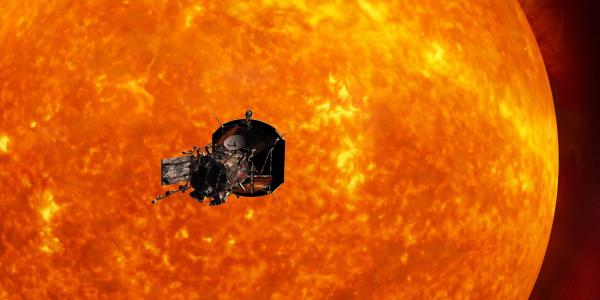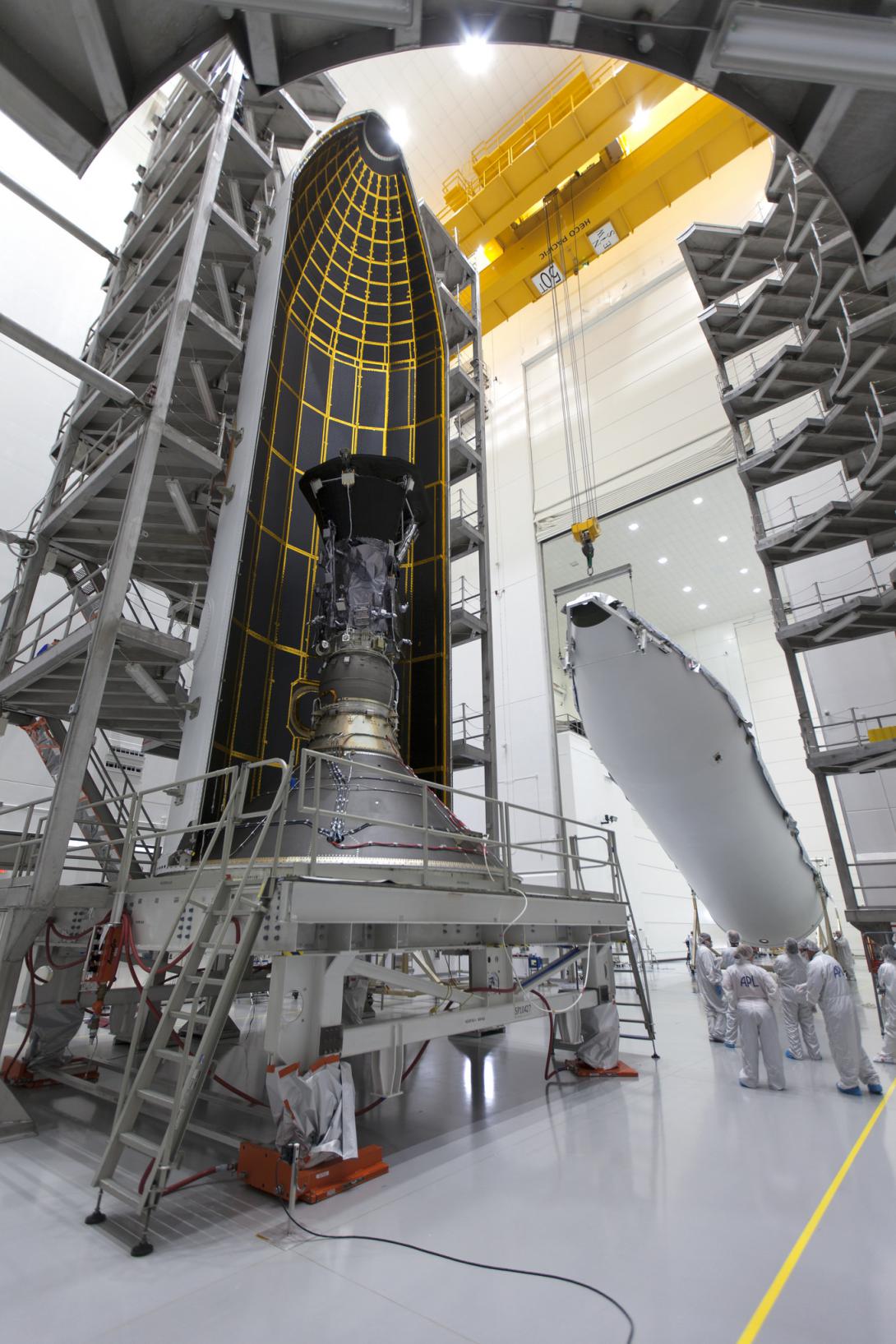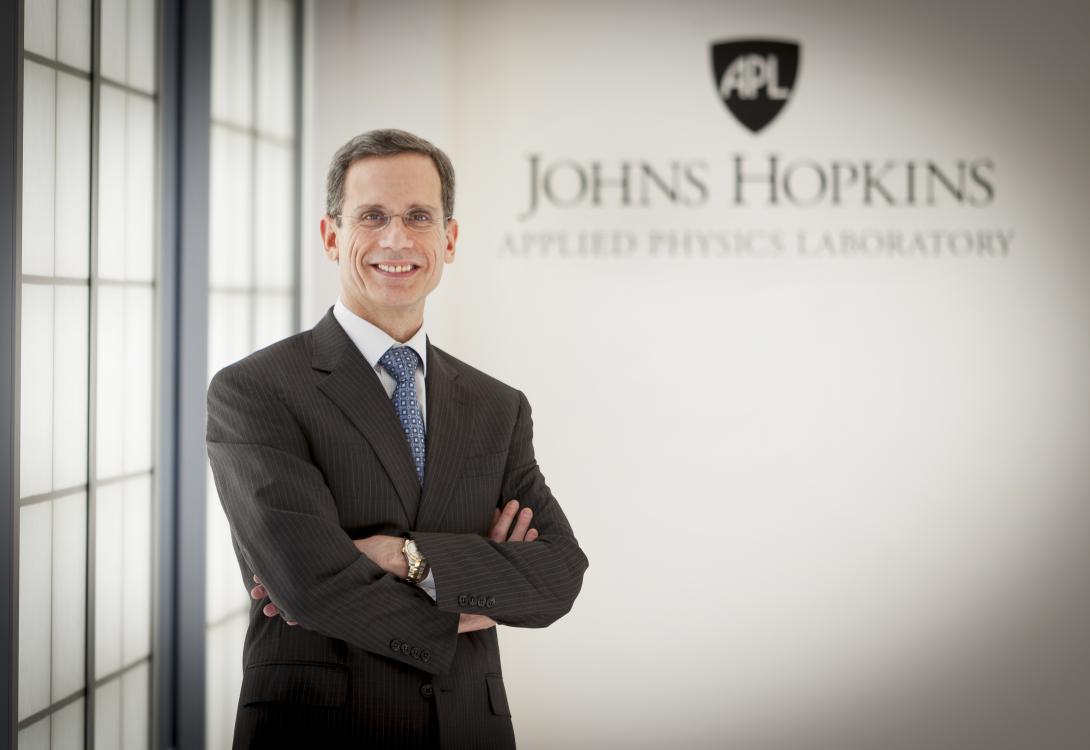A Long-Term R&D Vision for Johns Hopkins Lab
In a world where the U.S. Defense Department is facing asymmetric threats, department leaders are counting on long-term research and development to provide primary solutions to protect the nation. For the Johns Hopkins University Applied Physics Laboratory, which has helped create technologies that have changed the course of history, the pressure is on to find the next significant contribution, says the laboratory’s director, Ralph Semmel. “When you look back in history, we had nine of those [groundbreaking technologies], so we are holding ourselves to a very high bar,” Semmel says. “But the key is that we don’t know which technology is actually going to turn into a defining innovation.”
Semmel is referring to the laboratory’s past successes, such as the radio proximity fuze, surface-to-air guided missiles and satellite-based navigation. For the lab—also known as the APL—and other members of the military research community, another challenge is the changing nature of the Defense Department’s role compared with 50 to 75 years ago. “Where [the Defense Department] used to have such a dominant role in setting the direction for technology, they play a much smaller role now,” Semmel observes. “Commercial industry, especially if you look out at some of the things that have happened in the computing industry, is playing a more dominant role. And because there is so much commercial technology being developed, the leap-ahead advantages that we might have once had are harder to get.”
But because adversarial countries are developing technologies that could put U.S. forces at significant risk, university-affiliated research centers (UARCs) such as the APL and federally funded research and development centers (FFRDCs) still have to strive for so-called leap-ahead technologies, Semmel stresses. “It’s very important, from my standpoint, that the U.S. continues to invest and innovate in longer-term as well as shorter-term research so that we’re ready for any challenges that are coming down the pike,” he says. “We can’t lose sight of the long-range vision. We’re always going to have these short-term challenges, but we also have to be thinking 10, 20 years from now.”
Critical areas of research and development (R&D) at the APL over the next eight to 10 years include hypersonics; directed energy; command and control; artificial intelligence (AI) and machine learning; missile defense; quantum science; autonomy; space, including offensive and defensive capabilities; nuclear modernization; and microelectronics. That list closely mirrors the top 10 R&D areas outlined by Michael Griffin, the undersecretary of defense for research and engineering, Semmel says. The lab director complements Griffin’s list with two more crucial R&D areas: undersea systems and biological technologies.
“The undersea domain is absolutely critical, and it’s an area that the United States has an advantage,” Semmel emphasizes. “We want to make sure that we are investing in the resources needed to ensure that advantage for decades to come.”
Among other undersea research areas, rapid mine detection has the lab’s attention. “That’s a very difficult problem,” Semmel admits. “What you’d like to be able to do is to have a ship, submarine or an undersea vehicle go into an area and be assured that it’s not going to be struck or encounter a mine that will do significant damage to the platform.”
Biology and neuroscience present both “tremendous challenges as well as tremendous opportunities,” he says. In neuroscience, the APL is focusing on brain-computer interfaces. Building on the concepts developed under the Defense Advanced Research Projects Agency’s prosthetics program, researchers at APL are developing noninvasive brain-machine interfaces. “The issue is that the brain, being a biological system, tries to protect itself and tends to reject these sensors over time,” Semmel says. “So, the research question is: Can you achieve the kind of sensing capability that you might be able to achieve through a direct cortical implant through the skull?”
The APL is examining noninvasive brain-machine interfaces that use optical techniques—or light—to detect activity in the brain and infer what a person thinks or wants to do. “And if you can do that kind of thing, that noninvasive interface allows you to start thinking about all kinds of other potential capabilities,” Semmel says. “Think about command and control in a cockpit of a plane, where now you are not having to move your hands and such. You are simply thinking. You can imagine the kind of potential impact that could have on military operations if you are able to have that merging and singularity between people and machines like that.”
The laboratory also is studying synthetic biology. Giving the United States solutions when facing a deadly pathogen starts with understanding who developed the pathogen. “The U.S. is going to have to be able to quickly respond to the outbreak of novel disease, both naturally occurring and synthetically made,” Semmel notes. “With synthetic biology, one of the things we focus on is this whole notion of attribution. Just because a deadly pathogen is released doesn’t mean we know how it was released or who released it. So a question that we are going to have to face is, Can we determine, based on the characteristics of the pathogen, who might have been responsible? It’s an attribution problem.”
Regarding hypersonics, the APL has been “a national leader in that area for a long time,” Semmel says. Presently, the laboratory is focused on the material science aspects of hypersonic weapons, such as developing the appropriate coatings that could withstand the stresses of extended hypersonic flight at speeds of Mach 5 or greater. Scientists are building on the related research of the materials used for NASA’s Parker Solar Probe, which the APL designed and fabricated to travel to the sun. The spacecraft, launched in August from Florida’s Kennedy Space Center, includes a carbon-carbon composite thermal protection system, or heat shield, to fortify the spacecraft as its flies through the sun’s corona. “That kind of thinking and technology is what goes into helping with the materials that we think we need for hypersonic weapons,” he shares. In addition, the APL is looking into hypersonic vehicle design, but given the weapons race to develop a hypersonic capability, the director could not share more details.
The laboratory also is very heavily focused on missile defense. “The heritage of APL is missile defense,” Semmel says. Scientists are examining the concept of comprehensive layer defeat and how to protect the nation from a large number of simultaneous incoming missiles. The concept means to defend across an area, “from an outer battle, a midrange battle and an inner battle, so if a missile leaks through, you have yet another way of affecting it,” the director states. “We are doing R&D that will enable combat systems to be developed and existing combat systems to be modified to deal with these kinds of things.”
Additionally, the APL is investigating how the military can employ big data analytics from a targeting standpoint. “If there’s an adversary missile system or something else that is difficult to get data on, the question is: How does one pore through all the data ... and be able to pick out the information that needs to be focused on?” Semmel asks. “That’s something that is going to be very important as we look ahead.”
At the laboratory’s Intelligent Systems Center, built three years ago, researchers are focusing on AI, autonomy, robotics and neuroscience. In addition to aerial and undersea autonomous applications, researchers are considering how to use and counter autonomous systems, including how to take down multiple incoming vehicles and how to disable autonomous subsystems. “Autonomy is something that is clearly going to have profound impacts,” Semmel says. “[But] there have been a lot of AI springs and winters. So it’s trying to figure out how we use the AI, how do we protect the AI, where to put the human into the decision making, and what are the ethical implications of using AI?”
For positioning, navigation and timing (PNT) applications, the APL is testing resilient technology for GPS-denied environments. Scientists are studying how to take advantage of multiple sources of navigation and time data to provide the accuracy and timing needed for geolocation as well as weapon systems utilization, the director offers.
For the laboratory that celebrated its 75th anniversary a little more than a year ago, the goal will continue to be “creating defining innovations that ensure our nation’s pre-eminence in the 21st century,” he says. As a West Point graduate who holds multiple advanced degrees, including a doctorate in computer science, Semmel says he finds conducting innovative research in service to the nation much more satisfying than pursuing the spoils of the commercial sector. And while adversaries persist in threatening the United States, the APL will pursue the complex research, engineering and analytical issues to find solutions that make a marked difference in its defense.







Comments